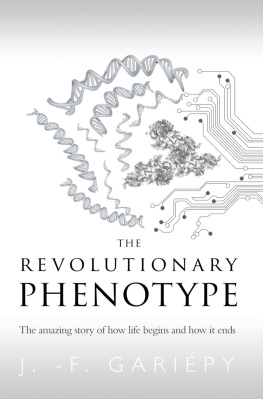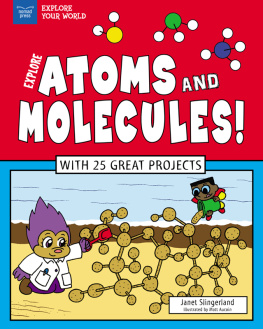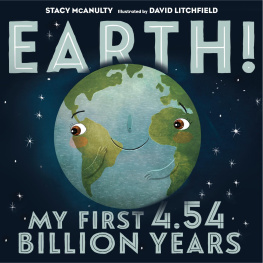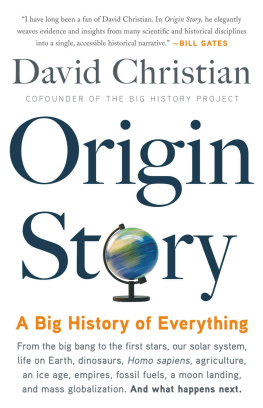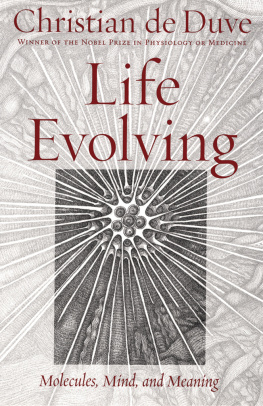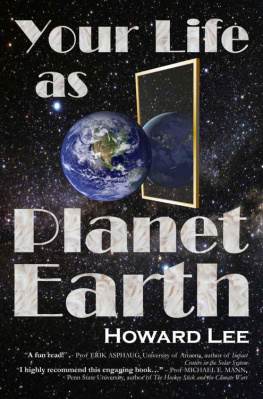THE REVOLUTIONARY PHENOTYPE
J. -F. Garipy
Copyright 2018 lora ditions
All rights reserved.
ISBN: 1729861563
ISBN-13: 978-1729861561
For those who were unjustly taken against my will: R., J., .
For those who were not: .
Contents
Part I: The Questions
Part II: The Answers
Part III: Predictions
Letter to the Reader
It has now been more than five years that Ive been reflecting on the theory laid out in this book. Most employed scientists today do not have the leisure to spend that much time doing science. They spend most of their days writing grant proposals and asking the permission of ethics committees. Long-term thinking is not rewarded in academia, as a scientist must produce something good every year or so in order to remain competitive. The quality of scientific works, as a result, has greatly diminished.
I quickly realized that if I maintained employment in a university, I would be unable to put in the intellectual efforts this scientific theory deserved. When I discovered the first few elements of this theory, I resigned from my postdoctoral position at Duke University. I knew that anything I would spend my time on in the academic world would inevitably be less important than this book.
Along the way, I had to find survival strategies other than begging the state for money to fund my scientific project. It turned out to be quite fascinating. I started a YouTube career and I now make a living out of discussing science, news and politics on the Internet.
A theory as important as the one laid out in this book usually comes with a letter of introduction from a well-known scientist in the field. I did not solicit such letters. The truth needs no introduction. Furthermore, the theory contained in this book is important enough that, one day, any person interested in the fate of humanity will feel obligated to read and share it.
I do, however, have a commitment to honor through this letter. When I was starting out, one of the early members of my audience said he would send me $10 if I promised to write a letter about him as the introduction to my book. He went by a pseudonym, Abraham Lincoln. I accepted his deal, and so here is your letter, Abraham, in a book I was able to write thanks to people like you.
Across the years, I have gathered millions of views on YouTube for my news and educational videos. The core of my audience has come to be a highly intellectual and engaging crowd. I feel at home among them even more than I used to in my monkey laboratory. They are some of the most critical and intelligent people I know.
So, I thank all of them for participating in this community and for having indirectly funded this important book. And I thank all of you for picking up this book. If you are holding this book in your hands, the fate of humanity depends on you.
Prologue
How would you react if, in the first few lines of a book, the author told you the book youve just opened contains the complete description of how humanity will almost certainly destroy itself? Would you close the book and hope that no one else reads it? Or would you absolutely want to read it and spread the word about its contents to others?
Im not asking these questions merely as a thought experiment. You are indeed holding a book which portends the end of DNA-based life on Earth. Most of the technology required to implement this carnage has already been developed and there are no international laws keeping anyone from using it.
Furthermore, there is very little hope that enough people will read this book and be motivated enough to keep this slaughter from happening. If anything, a naive part of humanity may very well read this book and be encouraged by it, joyfully welcoming humanitys upcoming extinction.
Hopefully, though, the information contained in this book will motivate humans to look at the path we have so naively engaged in. If the readers of this book act in concert, we may be able to stop humanity from committing a monumental mistake.
This book delves into a fascinating, yet very rare, type of biological events. During these events, groups of naive creatures fabricate other, better, life forms. Soon after they are born, the novel life forms end up annihilating the ancient ones that spawned them.
According to modern science, such events have occurred repeatedlyas many as three times within the past few billion years on planet Earth alone. Homo sapiens are about to become the first earthly species to develop an awareness of them. Simultaneously, we may also become the first life form to acquire the requisite knowledge to prevent such events from recurring. To paraphrase George Santayana, those life forms who cannot infer their forebears past revolutions are condemned to repeat them .
The biological events described in this book are nothing short of apocalyptic. Imagine a group of living creatures who casually decide to fabricate another life form, only to realize as they see their creation come alive that it will eventually outperform them and ultimately take over. This scenario is not discussed in the biology textbooks of your local state-funded university. Many teachers of biology prefer relegating such considerations to the realm of science fiction. However, in doing so, they deny current scientific advancements, for biology has now matured to a point where we can no longer treat this doomsday scenario as hypothetical.
It is a fact that DNA-based life was created by another life form. The ancient life form was called RNA. Sometime after the creation of DNA, the RNA organisms lost control over it and could do nothing to stop its takeover. That is what happened here on Earth and, it can, and likely will, happen again.
The events covered in this book are so singular that biologists have, up to now, refused to even give them a name. I call them phenotypic revolutions . These events occur every time one organism, with its own genetic code and means of reproduction, creates another organism with a separate genetic code and means of reproduction. By exploring these events, this book answers the most fundamental questions regarding the origins of life on our planet.
The following pages explain why life exists and how the first ancestor of a line of biological descent comes to be. We previously thought such organisms appeared through unlikely, random events occurring in the molecular chaos of some thick primordial soup. Contrary to our expectations, the first glimmers of life on our planet are simple and predictable consequences of processes that must occur on a regular basis pretty much everywhere. Throughout this universe, life forms actively manufacture and seed new life forms, only to disappear soon after giving rise to their creation.
What does a phenotypic revolution look like? How does it unfold? Allow me to sketch the following fictional scenario:
Suppose you want to have a child, but instead of reproducing in the traditional fashion, you and your mate opt to store your genetic information on a computer. Then, while your genes are digitally stored on the computers hard drive, you decide to make a few minor editsjust some slight improvements to ensure your kid will be healthy. You then dump your revised digital genome into a series of DNA molecules, which you inject into a human egg that has been stripped of its own native genome. Nine months later, your flesh-and-blood child is born, and you and your family proceed with your deeply satisfying life. You end up never regretting the decision you have made to modify a few genes in your childs DNA. Your child likes it too since he has better health and strength compared to most of his peers. Hes already dreaming of having his own genetically modified children.
Now, because phenotypic revolutions occur over millions of years, this happy ending would be the end of the story as far as you are concerned. However, suppose that before you perish, you are transported via Elon Musks new spaceship time machine to planet Earth 10 million years into the future. As your craft descends toward the newfangled terra firma, you are promptly disappointed. You had expected to see a vibrant, flourishing human civilization, the assumed benefactor of millions of years of culture and innovation, but as you step onto the surface of your once familiar planet, you recognize nothing. Humankind is absent, and all of its marvelous achievements are gone.
Next page
